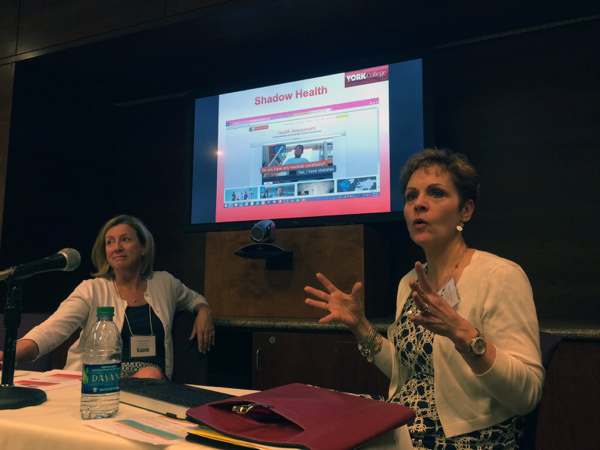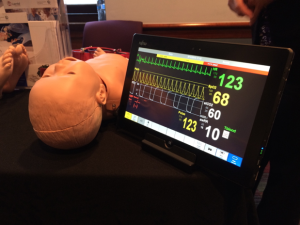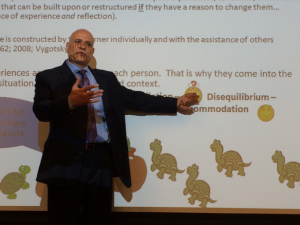DEADLINE EXTENDED !
APPLICATIONS ACCEPTED THROUGH AUGUST 28!
Deadline: August 14, 2015, 5pm ET
download guidelines here

The Center for Health, Media & Policy at Hunter College, City University of New York, has launched a new Healthcare Workforce Media Fellowship to train a recent graduate or early-career journalist on key aspects of reporting on healthcare and nursing workforce issues. The Fellowship is supported by a grant from Johnson & Johnson.
As the nation focuses on improving people’s experiences with care, improving health, and reducing health care costs, this fellowship will enable journalists to better understand issues and policy challenges surrounding our healthcare workforce. The goal is to improve coverage of this topic, with particular attention to the factors that affect existing and new roles of nurses and other health care providers..
The Fellow will investigate and report on a relevant topic of his or her choice for eight months, including cross-platform reporting.
The Fellow will be selected from a pool of post-graduate and early career health journalist applicants in August and will begin work with CHMP on September 16, 2015.
The Fellow will receive a stipend and support to attend a major healthcare or health journalism conference to foster networking and conversations with other journalists about nursing and workforce issues. The fellow will also have opportunities for one-on-one learning, training, and networking with experts in nursing, policy and journalism from CHMP’s national advisory council.
Who Can Apply?
Interested applicants should:
- Be a recent graduate (<2 years) of a recognized graduate journalism school and/or
- have worked as a journalist for no longer than five (5) years.
- Have strong interest in and commitment to health journalism, multimedia reporting and health care workforce issues
- Be available to meet in person with the program director and National Advisory Council members in NYC monthly as well as regular telephone or Skype conference calls. When possible, NAC, expert and program meetings will take place on the same day, to minimize travel and maximize use of Fellow’s time..
- Commit to publishing, at minimum one multimedia report, one print article or series, and two republications on a healthcare workforce issue that includes a nursing dimension; and demonstrate use of nurses as sources on health and health care.
Requirements
Articles must be published, broadcast, or posted through distributed or circulated news media entities rather than personal blogs, and must credit writing/production in conjunction with the fellowship (Sample texts will be provided that can be adapted for different media).The stories must reach an audience within the U.S.
Short-term story: The Fellow will produce a short story of approximately 1000 words (or comparable broadcast length) on any aspect of healthcare workforce issues. While not required, it may include information or interviews stemming from meetings with members of the National Advisory Council or other CHMP expert.
The piece must be completed no later than December 24, 2015, and scheduled to be disseminated no later than January 15, 2016. Examples of short-term stories include a news report, feature, or commentary about a meeting, or expanding upon a relevant study or discussion of health workforce issues.
Applicants do not need to propose a topic for the short-term story ahead of time, nor do they have to obtain advance approval from an editor/producer that the piece will be considered as an editorial assignment for publication or broadcast. The subject matter does not have to relate to the longer-term project and can be published through a different media organization if desired. However, it is the Fellow’s responsibility to ensure pieces are published according to stated deadlines.
Therefore, applicants should indicate where they expect to pitch the short-term story if it will appear in a different news outlet than the long-term project.
Long-term project: Each applicant should submit a proposal of up to one page, outlining a major story or series that she or he intends to research and write. The story or series should be of the Fellow’s own design, focusing on a a pressing healthcare workforce issue. While not required, strong consideration will be given to ideas that pay particular attention to the factors that affect existing and new roles of nurses and other health care providers. The Fellow is welcome to interview any NAC member or conference expert(s) as part of the piece.
The project deadline is Friday, March 18, 2016, and it must be scheduled to be disseminated no later than Saturday, April 30, 2016.
Along with the application, candidates should include an agreement from his or her editor/producer to accept the long-term project proposal as an editorial assignment for publication or broadcast.
Although the primary editor/producer for stories will be at each reporter’s news outlet, fellows will be encouraged to consult with program director Liz Seegert or CHMP co-directors Diana Mason and Barbara Glickstein for help with sources and background.
Dissemination
The stories resulting from this fellowship will first be published by the journalist’s media organization. HealthCetera, the blog of CHMP, HealthStyles Radio, and New America Media then have the option to cross-post the stories — with full credit and links back to the primary publisher — and make them available to member Pacifica stations or, in the case of NAM, its network of ethnic media outlets. Stories or broadcast reports must include appropriate supporting text (to be supplied) to the Fellowship, CHMP, and the Johnson & Johnson Foundation.
If necessary, CHMP and NAM editors may adapt reports to their specific format(s). The Fellow will have the right of final approval on any editing prior to publication or air.
Stipend and Travel
The fellow will receive a stipend of $1,500, with half to be paid on start of the fellowship and the remainder upon completion of the long-term project. CHMP will reimburse the Fellow up to $1,000 for travel, meals and expenses to attend one national journalism or healthcare conference or two regional conferences.
Selection Process and Eligibility
The fellowship selection panel will include journalism, nursing, and policy experts from the Center for Health, Media & Policy. Since this is the inaugural year of the Media Fellowship, the application process is open to any post-graduate or early-career journalist (<5 years’ experience).
Additional Information
For further details about fellowship requirements and potential stories, contact Liz Seegert, Program Director, Center for Health, Media & Policy at liz@healthmediapolicy.com. Be sure to put “Media Fellow” in the subject line.
Application Process
Applications must be submitted in a single Microsoft Word or Adobe PDF file consisting of the following components:
A cover letter containing:
- Applicant name
- Mailing address
- Office phone
- Mobile phone
- E-mail
- Employer (Freelancers please specify the length of affiliation with the outlet that will publish or broadcast the story.)
- Employer address
- Employer phone
- Employer’s circulation and audience demographic (Please indicate whether this media outlet serves a general audience or a specific community.)
- A resume.
- A proposal (up to one page) or outline describing an idea for long-term project topic, , its relevance to the audience, and why you chose to cover the issue.
- A letter from an editor/producer agreeing to accept the long-term project proposal as an editorial assignment for publication or broadcast.
- No more than three samples of published or broadcast journalistic work. For applicants submitting print samples, the full story text should be included in the application document. For applicants submitting broadcast samples, please include hyperlinks to these stories — either on a news organization’s website or a file sharing site such as filesanywhere.com — in the application document.
Applications that are not submitted in a single Microsoft Word or Adobe PDF file will not be reviewed. Please submit the file (using a file name format of “LastnameFirstname.doc” or “LastnameFirstname.pdf”) using the following link: http://bit.ly/1h0FhIO
Deadline: August 28, 2015; 5pm ET
Applicants will be notified on or before September 4, and selected candidate should be available for an introductory meeting on Wednesday, September 16, in New York City.
About CHMP
The Center for Health, Media and Policy (CHMP) is an interdisciplinary initiative for advancing the health of the public and healthy public policies. CHMP is a catalyst for shaping crucial conversations about health and health care through media, research, education, and public forums. This media fellowship is an extension of the Center’s mission, designed to increase awareness and encourage debate of critical health and policy issues. The Center was co-founded and is co-directed by Barbara Glickstein, MS, MPH, RN, and Diana Mason, PhD, RN, FAAN, producers of the radio program, Healthstyles, for 30 years.
DEADLINE EXTENDED !
APPLICATIONS ACCEPTED THROUGH AUGUST 28!
Deadline:










